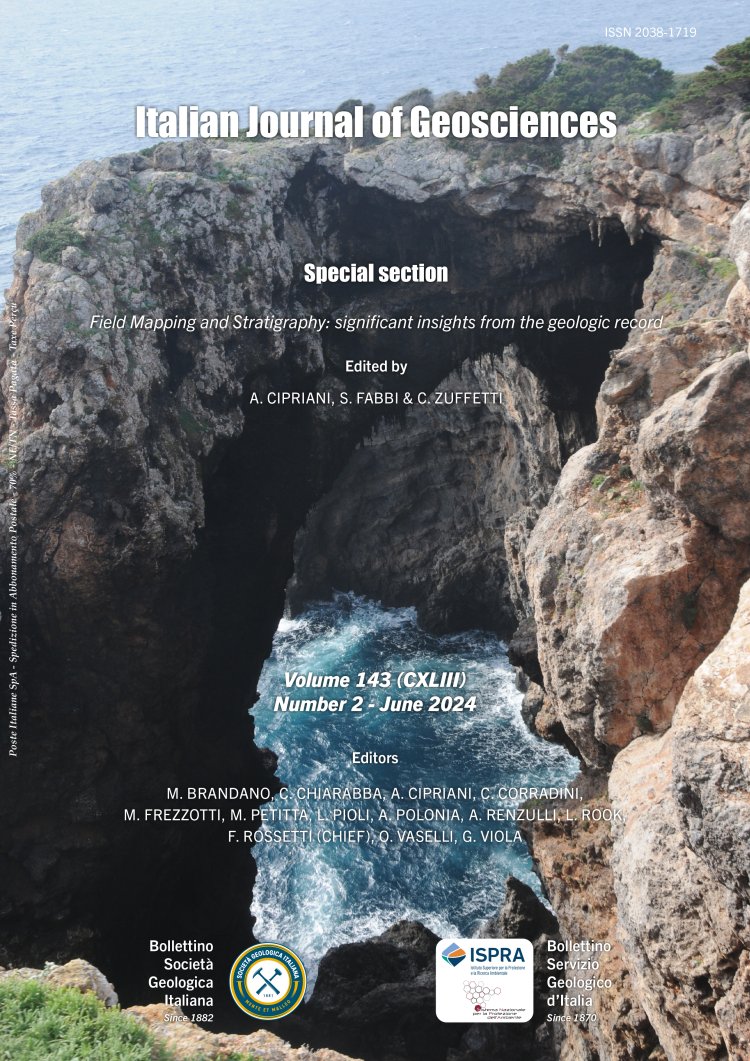
When stones tell about humans: a presumed anthropomorphic sandstone sculpture found in the Marche Apennines of central Italy
Alessandro Montanari1, Gianluca Mainiero2 & Maurizio Mainiero3
1Osservatorio Geologico di Coldigioco, Cda. Coldigioco 4, 62021 Apiro, Italy.
2Graphic Designer, Via XXIX Settembre 2/o, 60122 Ancona, Italy.
3Studio Geologico, Via XXIX Settembre 2/o, 60122 Ancona, Italy.
Corresponding author e-mail: sandro.coldigioco@gmail.com
Volume: 143 (2024) f.2
Pages: 213-225
Abstract
In this paper, we report on a cobble with a curious shape causally found on a Middle Pleistocene alluvial terrace at the eastern foothills of the Marche Apennine of central Italy. The examination of the stone under a binocular dissection microscope revealed that it was made of strongly cemented sandstone, a lithology virtually absent in that particular alluvial terrace, which otherwise consists of medium-coarse gravel mostly made of limestone pebbles and rare chert clasts derived from the Jurassic-to-Eocene carbonate succession of the Umbria-Marche Apennines. In fact, these rocks are exposed on the eastern slopes of the Marche Ridge, at a distance of about 2.6 km from the finding site. In other words, the cobble with a curious shape had to be considered an exotic clast in that particular alluvial terrace for both its size and lithology. It followed up a detailed study of the superficial texture of this exotic stone along with the construction of a high-resolution 3D digital model of it, which revealed evidences of mechanical carving that, ultimately, gave to the original hard sandstone cobble an anthropomorphic shape. After pondering on this probable man-made artefact in its geological and archaeological contexts, we concluded this study by interpreting it as a prehistoric sandstone sculpture crafted by a local artist.
Keywords
North-eastern Apennines, Quaternary fluvial terraces, geoarchaeology, Prehistoric
lithic industries, Anthropomorphic sculpture, Botroid.
Get Full Text